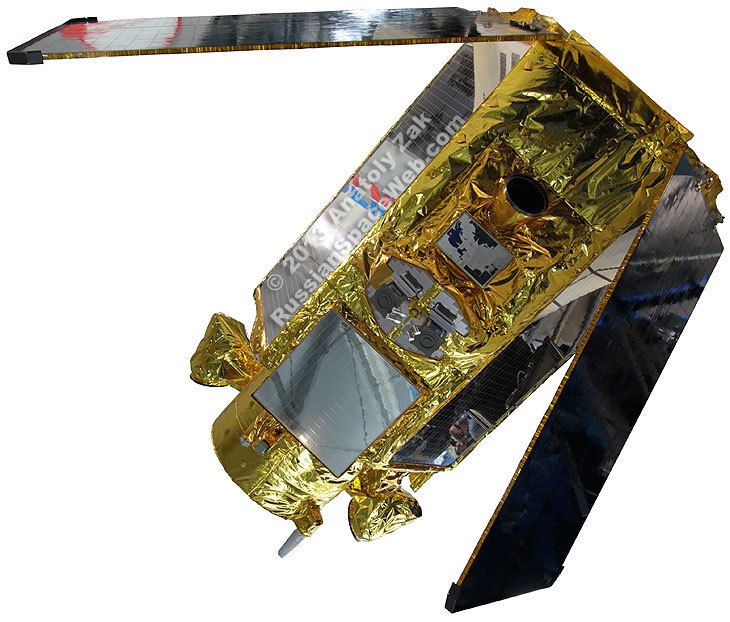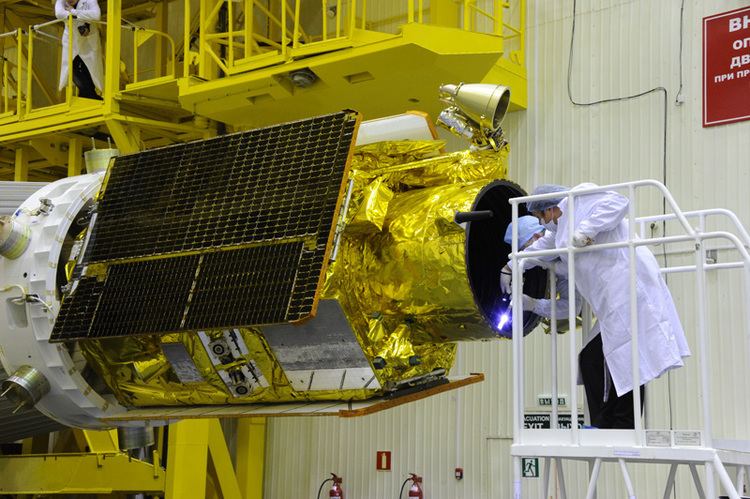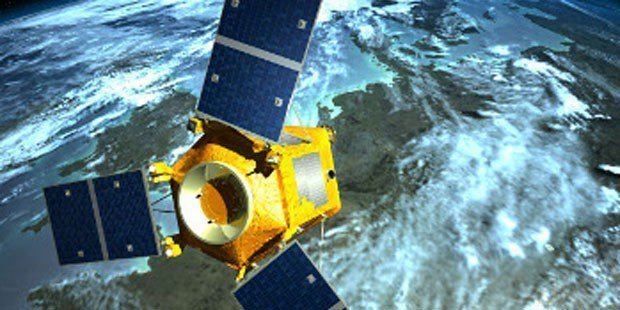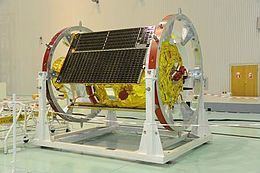COSPAR ID 2014-021A Website www.narss.sci.eg Inclination 51.6° Last contact 14 April 2015 | Operator NARSS SATCAT no. 39678 Launch date 16 April 2014 | |
 | ||
Mission duration Planned: 11 yearsFinal: 363 days Manufacturer S. P. Korolev Rocket and Space Corporation Energia Similar EgyptSat 1, Progress M‑23M, Kondor, KazEOSat 2, Progress M‑24M | ||
Egyptsat 2
EgyptSat 2 also called (MisrSat 2) is Egypt's second remote sensing Earth observation satellite built by the Russian RSC Energia and the Egyptian NARSS while the incorporated cameras and payload was developed by OAO Peleng and NIRUP Geoinformatsionnye Sistemy in Belarus.
Contents

A frameless spacecraft had been utilized in EgyptSat 2, as it is an innovative technology being first time used in Russia.

EgyptSat 2 was launched on board a Soyuz-U rocket on 16 April 2014 from the Baikonur Cosmodrome which was a milestone toward establishing the Egyptian Space Agency.

History

EgyptSat 2 was planned to be launched in October 1, 2013 but the launch was put on hold on 2011 following all contact being lost with EgyptSat 1 due to a failure of its S-Band communication system.
Overview
In 2007, Egypt made its first attempt to launch a high-resolution surveillance satellite launching the Ukrainian-made EgyptSat 1, but the satellite failed prematurely after 3 years, However, Egypt continued working with Yuzhnoye Design Bureau for the next project, until it received a bid from Russia to supply a state-of-the-art "eye in the sky". Negotiations lasted for more than four years until Egypt awarded the contract to Russia for the development of a high-resolution imaging satellite.
The project was handled by RKK Energia based on Korolev on the behalf of Russia, codenamed "E-Star". 60 percent of the satellite's hardware was made by Egypt. Russia also trained Egyptian engineers to control the satellite from a ground station near Cairo. The cost of the project is rumored to be around 40 million dollar fully funded by the Egyptian Armed Forces.
The ship was shipped to Baikonur on February 2014 and was launched on April 16, 2014.
Description
EgyptSat 2 is a hexagonal satellite, equipped with three deployable, fixed solar arrays and nickel-hydrogen batteries, and Its optical imaging payload will cover the visible and infrared spectral bands, providing a ground resolution of 13.1 feet (four meters) for multispectral imagery and 3.3 feet (one meter) for panchromatic imagery. It includes total coverage of Egypt’s land and maritime territory and their environs.
A new and revolutionary technology had been demonstrated first time, as EgyptSat 2 became the first frameless spacecraft created in Russia and the first satellite created by such technology in the history of Russian cosmonautics. The frameless base technology reduces the final assembly of the satellite from six months with several trained professionals and special equipment, to 10 minutes with only two experts, which in turn minimizes effort, time and costs while not compromising the quality of the final product.
Mission
The satellite is supposed to supply the Egyptian government with high-resolution views of Earth for environmental, scientific and military applications. Data will be transmitted through an X-band communications terminal at a rate of 300-600 Mbit/s to ground stations located near Cairo and Aswan.
According to Tal Dekel, a research fellow at Tel Aviv University’s Yuval Ne’eman Workshop for Science, Technology and Security, few were aware of the extent of Egypt’s satellite program and the satellite is disguised as scientific research but the truth it would be used by the Egyptian Armed Forces as a spying satellite.
EgyptSat 2 acquired its first images on April 30, that released by RSC Energia showing Taylor Bay and Melbourne, Australia.
EgyptSat 2 is circularising its orbit at about 720 kilometers height using an electric propulsion system, planned to complete in August 2014.
The total cost of the mission was about $40 million.
Assumed lost and end of mission
On April 14, 2015, the EgyptSat 2 was unresponsive to commands from the Earth and control over the satellite was lost due to a human factor as the main possible cause according to the Russian Izvestiya newspaper, citing a source in the RSC Energia. While the National Authority for Remote Sensing and Space Sciences (NARSS) insisted that EgyptSat 2 is still recoverable, as the head of NARSS Medhat Mokhtar said, "What was reported about is in fact a regular technical failure. It happens every now and then to all the satellites. The problem will be fixed in the next few hours," explaining that, "any failure in control of satellite begins with absence of response to commands from Earth, and the low battery could be the problem, but it will be fixed and control will be fully restored."
EgyptSat 2 was experienced few problems since December 2014, as it lost some of the battery capacity, also on mid-April 2015, EgyptSat 2 had an attitude control issues, then a failure of the primary and backup computer of the satellite had occurred within 15 seconds of each other and no official information was released by the satellite’s operator or manufacturer.
